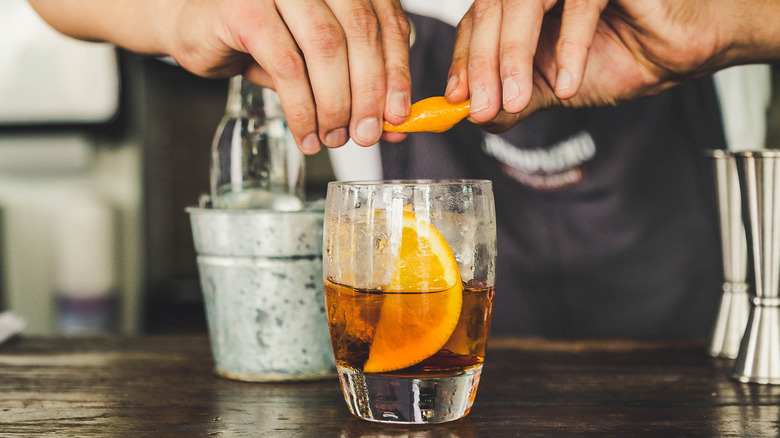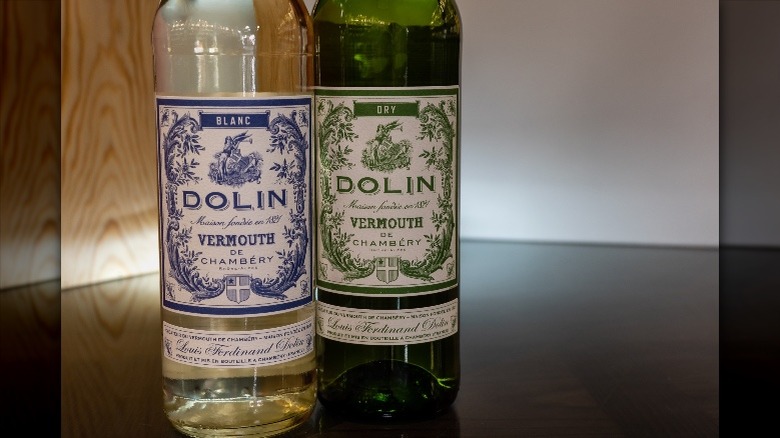The Complicated History Of Vermouth's Popularity In The US
Did you know that the history of vermouth's popularity in the United States is quite complicated? Tasting Table delved into this intriguing narrative through an enlightening conversation with Francesco Lafranconi, master mixologist at the Rosevale Cocktail Room in the Civilian Hotel in NYC. Vermouth, an aromatic wine fortified with herbs and spices, has significantly shaped the American cocktail scene, particularly in the "Golden Age of Cocktails." However, the drink's popularity in America has had both highs and lows.
Vermouth first gained traction in the U.S. towards the late 1800s, becoming a staple in New York's vibrant bar scene. Yet, Prohibition abruptly halted this rise, significantly impacting the art of cocktail-making and diminishing vermouth's standing in the bar scene. Following Prohibition, a shift in American cocktail preferences toward tiki bars and sweeter liqueurs in the 1970s further sidelined vermouth. As Lafranconi points out, vermouth was "used only in 'dashes' rather than in ounces in Martini and Manhattan recipes, particularly from the 1980s up to early 2000s."
Over the decades, an additional challenge impeded vermouth's popularity. Many bartenders and cocktail enthusiasts were unaware of how to properly store open bottles and keep vermouth fresh, leading to the booze's rapid oxidation and declining quality. Lafranconi adds, "It took almost 130 years, since its first importation to the U.S., and the popularity of a great classic Italian cocktail like the Negroni ... for vermouth to [end] up being the star of the show among well-educated curious bartenders and up-and-coming mixologists."
Vermouth is now a trending darling in the U.S. cocktail scene
With the growing popularity of classic cocktails like the Manhattan and the Negroni, the 21st century has seen a resurgence of vermouth in the bar scene and cocktail culture. Francesco Lafranconi remarks that the past 15 years have seen a remarkable increase in the quality of rye whiskies and gins in the U.S., creating a demand for superior vermouth to craft more sophisticated versions of dry Martinis, Negronis, and Manhattans. This shift toward higher quality has been instrumental in vermouth's comeback.
Bartenders and mixologists, better educated and more inquisitive than ever, are now actively exploring the rich flavors of vermouth, using it to enhance their cocktail recipes. Lafranconi adds, "Pioneer brands like Carpano, Martini & Rossi, Cinzano, Cocchi, Noilly Prat, [and] Dolin invested time and marketing resources to educate the trade and consumers alike through public events, brand ambassadors, and social media platforms." These efforts, according to Lafranconi, have significantly increased awareness and appreciation of vermouth among both professionals and consumers.
Vermouth's journey from a once-popular ingredient in the Golden Age of Cocktails, through a post-Prohibition decline, to its current fashionable status is complicated yet remarkable. As vermouth continues to gain popularity, it will undoubtedly be a staple ingredient in many drinks for years to come, marking an exciting chapter in the evolving narrative of American cocktail culture. Lafranconi and we at Tasting Table agree that there is a "bright future [ahead] for this incredible flavored-aromatized wine."

